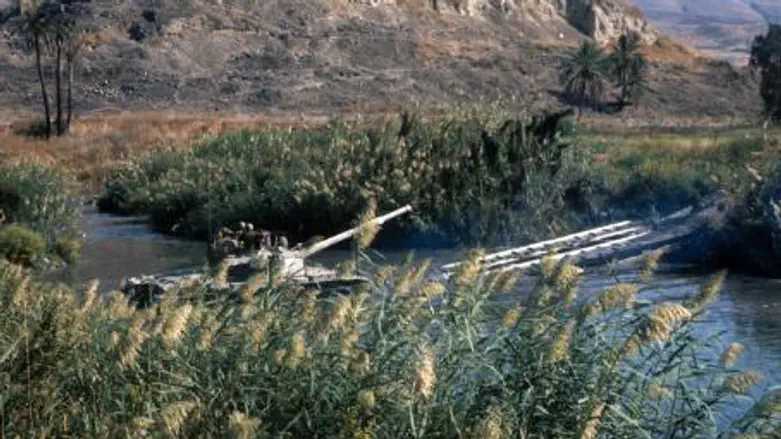
Environmentalists on both sides of the Jordan River are warning that the legendary body of water, now reduced to a stream, may soon fade away to nothing at all. And that from a river described in the Bible as “overflowing,” where otters and other water creatures used to play. They're long gone.
Pilgrims still baptize themselves in the waters where Christian tradition says that John baptized Jesus, however – although many choose a different, less polluted spot on the river than the one described.
A report released last week by the organization “Friends of the Earth Middle East” said there are areas of the Biblical river are already so narrow that one can simply walk across. “It's [only] ankle deep,” warned Gidon Bromberg, the Israeli director of the organization. “You struggle to see the water.”
Scientists who conducted the study predict that large areas of the river could dry up altogether by 2011 – a risk that could also affect the Dead Sea, into which the river feeds, to its south.
What remains at present is mostly a canal of waste water, scientists said – and even that is rapidly disappearing due to a decision that ironically was made to try and save the river in the first place.
A decision by authorities in both Israel and Jordan to redirect sewage that previously had been dumped into the river into treatment plants instead didn't help as it was intended to. The problem, explained the report, is that if the waste water is redirected away from the lower Jordan, no other water will be available to to take its place.
In addition, diversion of the water sources upstream for various uses by Israel, Jordan and Syria for drinking water and agricultural use have also been responsible for the slowing of the waters and the subsequent damage to the shrinking Dead Sea, the lowest spot on earth.
Hebrew University's senior Middle East expert Professor Moshe Sharon blamed the Syrians for much of the shrinkage. Sharon pointed to the dozens of dams built on the Yarmouk River and its tributaries by Israel's northern neighbor, which blocked the natural flow of water to the Jordan. In the past, he noted, the Syrians have attempted to block the upper Jordan altogether, as well as find ways to pump water from Lake Kinneret which feeds the Jordan.
The recommendations of the report included pumping the treated waste water back into the Jordan, and channeling fresh water from Lake Kinneret (Sea of Galilee) and the Yardenit tributary of the river itself, about 60 miles upstream.